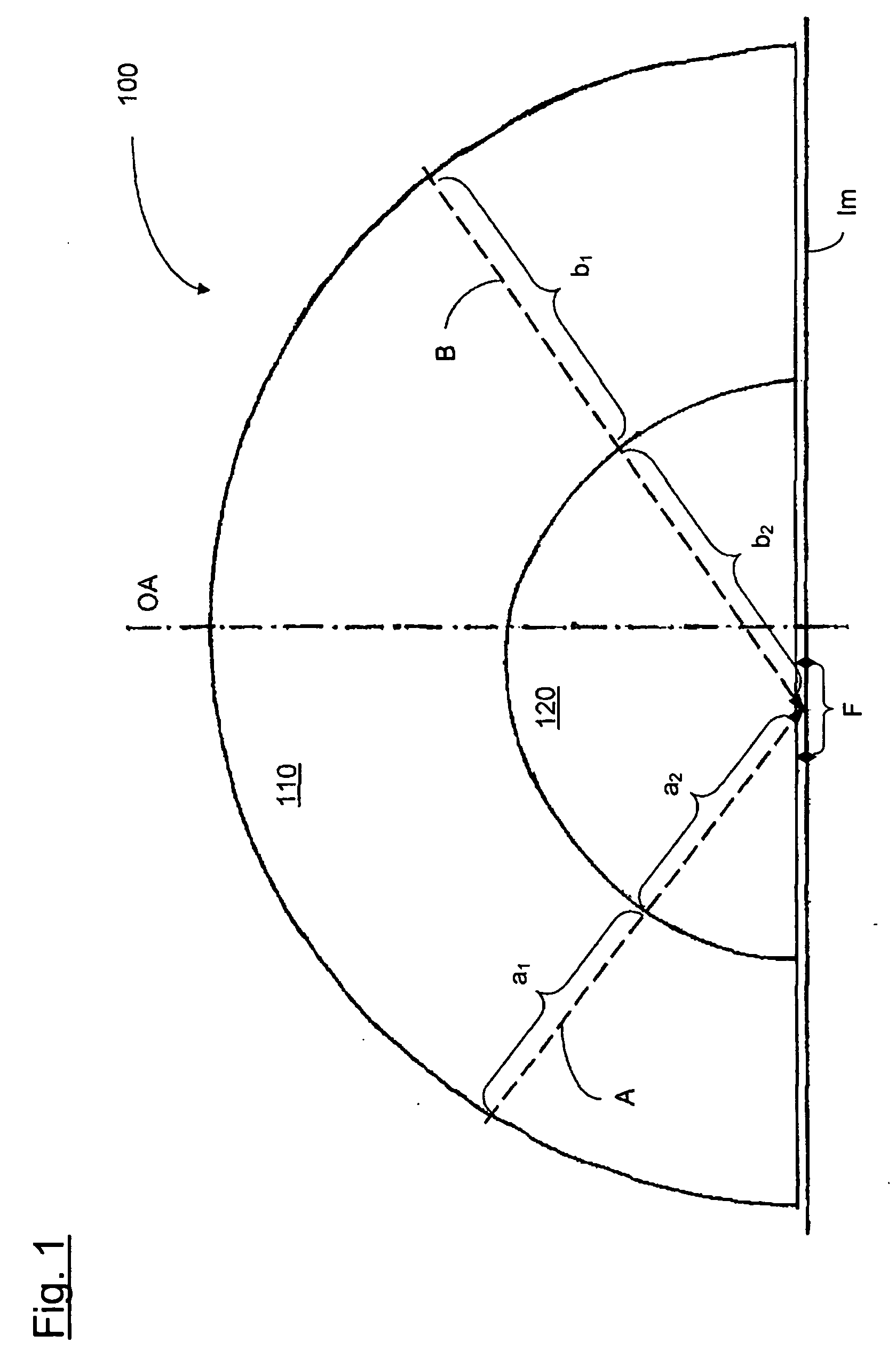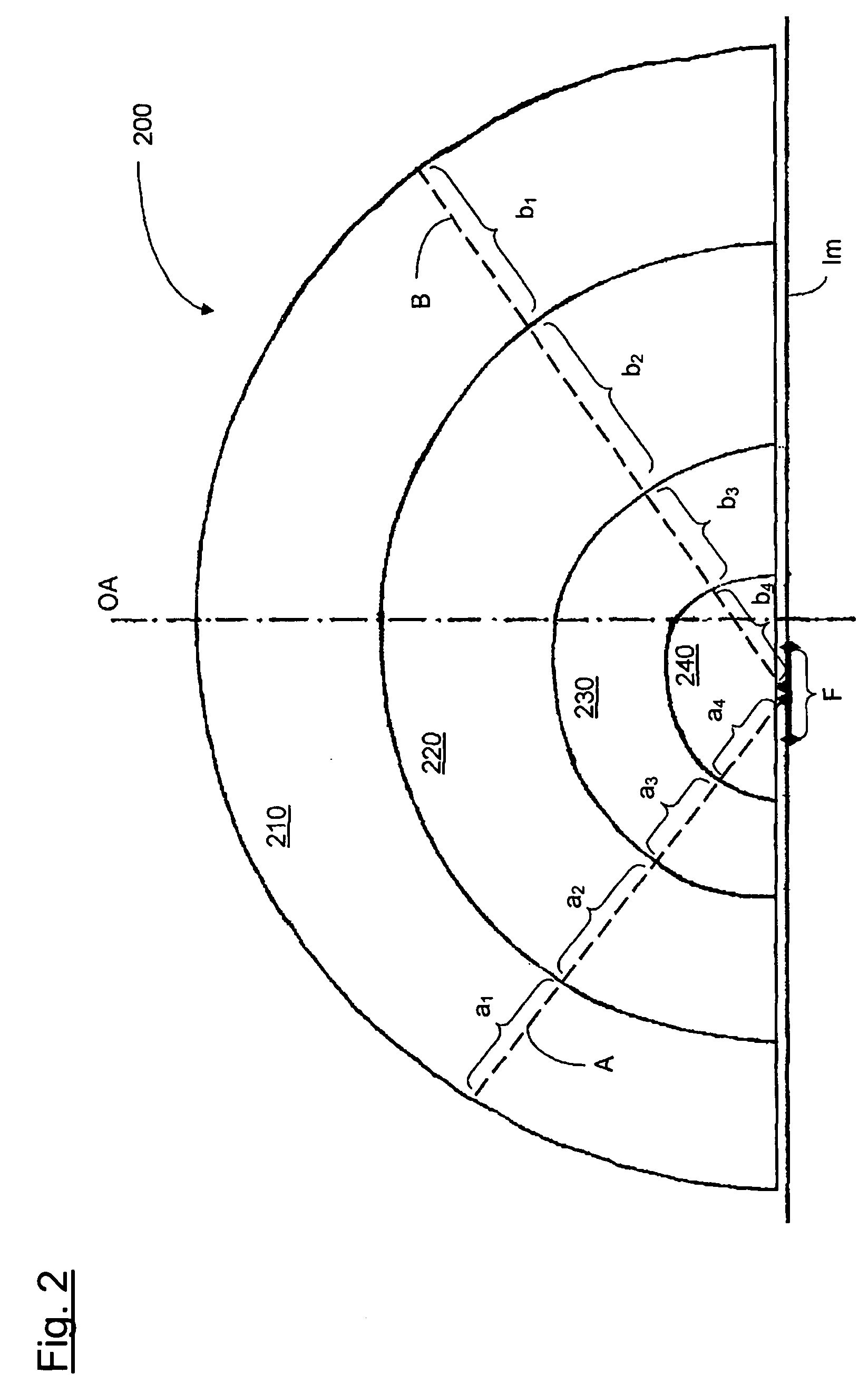Imaging system, in particular a projection objective of a microlithographic projection exposure apparatus
a projection objective and exposure apparatus technology, applied in the field of imaging systems, can solve the problems of incomplete compensation achieved with the aforementioned “clocking” and a degree of intrinsic birefringence, and achieve the effect of reducing the negative effect of birefringence on image quality
- Summary
- Abstract
- Description
- Claims
- Application Information
AI Technical Summary
Benefits of technology
Problems solved by technology
Method used
Image
Examples
Embodiment Construction
[0061] In a merely schematic manner, FIG. 1 shows the design structure of an optical element 100 in an imaging system according to the invention in accordance with a first preferred embodiment. With preference, the optical element 100 is in particular the last lens on the image side in a microlithographic projection objective whose principal design structure remains to be explained hereinafter in the context of FIG. 4.
[0062] Preferably, the imaging system is a catadioptric projection objective in which according to FIG. 1 (in a merely schematic representation that is not true to scale) an off-axis image field “F” (i.e., lying outside of the optical axis “OA”) is produced in an image plane “Im”. According to FIG. 1, the last optical element on the image side is a planar-convex lens 100 which in regard to its optical outside surface is rotationally symmetric relative to the optical axis OA. However, as shown schematically in FIG. 1, the planar-convex lens is composed of elements 110 ...
PUM
 Login to View More
Login to View More Abstract
Description
Claims
Application Information
 Login to View More
Login to View More - R&D
- Intellectual Property
- Life Sciences
- Materials
- Tech Scout
- Unparalleled Data Quality
- Higher Quality Content
- 60% Fewer Hallucinations
Browse by: Latest US Patents, China's latest patents, Technical Efficacy Thesaurus, Application Domain, Technology Topic, Popular Technical Reports.
© 2025 PatSnap. All rights reserved.Legal|Privacy policy|Modern Slavery Act Transparency Statement|Sitemap|About US| Contact US: help@patsnap.com



